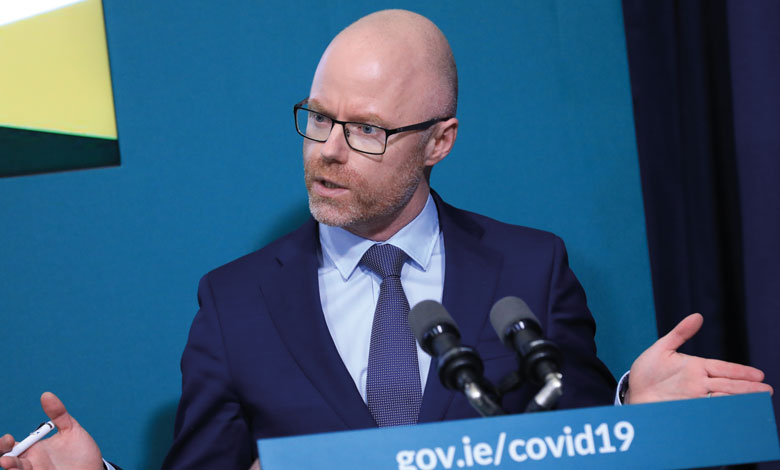Government claims Sláintecare progress

Sláintecare remains the policy guiding the Department of Health. While HSE performances have improved and some structural changes have taken place, the vision of a universal healthcare system by 2031 remains an ambitious one.
Sláintecare was launched in 2019 following the publication of a report by the Oireachtas Committee on the Future of Healthcare in Ireland in 2017, led by former Social Democrats co-leader Róisín Shortall TD, which outlined a vision for “a universal health and social care system where everyone has equitable access to services based on need and not the ability to pay”.
The progress made in some areas, while significant for future health outcomes, can be broadly analysed as a continuation of the recovery from the backlog taking place throughout the health service from Covid-19-induced challenges.
On the objective of improving access, the Sláintecare Progress Report 2021-2023 outlines that a 32 per cent reduction in the number of patients on waiting lists was achieved in 2023, when compared with 2022, and that the number of patients on trolleys in 2023 is down versus 2022 – a 22 per cent reduction for the second half of 2023 versus the same period in 2022.
The Government can claim incremental progress on free healthcare coverage, with around 500,000 (out of a state population of just under 5.3 million) now eligible for a GP visit card. The Department of Health states that more than half of the population are now eligible for either a medical or GP visit card.
In addition, the progress report states that savings for patients have been achieved with the abolition of public hospital inpatient charges, which were abolished in April 2023 and can patients up to €800 per year. These charges were abolished for children under the age of 16 in 2022.
Free contraception is another measure introduced which the Department attributes to Sláintecare. In 2023, the free contraception scheme – which was introduced in September 2022 – was extended in a phased approach throughout the year making it available to all women aged between 17 and 30. Since then, the Department further expanded the scheme to include women aged 31 from January 2024. Approximately 189,000 women availed of the scheme in 2023.
Capacity
The Department of Health has further heralded progress on hospital capacity, as, since the formation of the Government in 2020, 1,182 new acute inpatient beds have been added, with ambitions for a further 91 acute beds to open in 2024. At the time of publication of the report, 330 critical care beds are now available, 72 more beds than in March 2020.
The Department further states that an increased workforce is enabling better capacity, with 145,985 staff working in the health service as of the end of December 2023. The report further details a 26,000 increase in healthcare workers to the end of December.
Employment levels at the end of March 2024, show there were 148,293 whole time equivalent (WTE) [equating to 166,997 personnel] directly employed in the provision of Health and Social Care Services by the HSE and Section 38 hospitals and agencies.
GP training
In terms of building a future workforce which can handle demographic changes and increased demand, the report outlines how the number of doctors entering GP training has been increased “significantly” in recent years, with 286 new entrants in 2023 and 350 places for new entrants for 2024.
Annual intake to the GP training scheme has been increased by over 80 per cent between 2015 and 2023, and the number of new entrant places to be available in 2024 is a 22 per cent increase on last year’s intake. In addition, GP recruitment is ongoing under the joint non-EU GP Training Programme between the HSE and Irish College of General Practitioners (ICGP). 112 non-EU GPs were recruited in 2023 under the training programme and it is planned to recruit up to 250 more non-EU GPs to Ireland in 2024.
The placement of GPs under the programme is targeted to rural and underserviced areas. Internal DoH statistical analysis indicates that between 1.5 and 3.1 GPs will exit training for each retiring GP “over the coming years”.
Reforming the health service
Under Sláintecare, fundamental reform of the principles of the health service remain a way off, but there have been some reforms to the Health Service Executive (HSE) and its operational structure.
The most significant reform to the health service under the auspices of Sláintecare has been the through the establishment of six HSE health regions ostensibly aimed to replace hospital groups (HGs) and community healthcare organisations (CHOs) and “enable the provision of better and more integrated care along regional lines”.
Under the HSE Health Regions Implementation Plan, published in July 2023, six regional executive officers have now been recruited and are in place.
A number of other incremental programmes have taken place such as the introduction of enhanced community care and the Chronic Disease Management (CDM) Community Support Team (CST) programme. However, it is unavoidable to observe that over the course of the Government’s term, there has been a diminution in the momentum of the healthcare strategy, as exemplified with the high-profile resignations of former chief executive Laura Magahy, who expressed her frustration at the slow pace of the implementation of the programme.
Anthony O’Connor’s resignation from the council of Sláintecare echoed this perspective, with O’Connor writing in a letter to Minister Stephen Donnelly TD that the original culture of Sláintecare had been “bulldozed”.
Response
Minister Donnelly, on the publication of the Sláintecare Progress Report, claimed that the health service has had “significant improvements that are delivering better health services to patients and the public, on our road to delivering universal healthcare for all”.
However, while Sláintecare remains the overriding health policy of the Government, the lack of fundamental changes beyond organisational structures mean that it is difficult to envisage a universal, free-at-the-point-of-use healthcare system emerging in this State by 2031 which is less than 342 weeks away at the time of writing.





